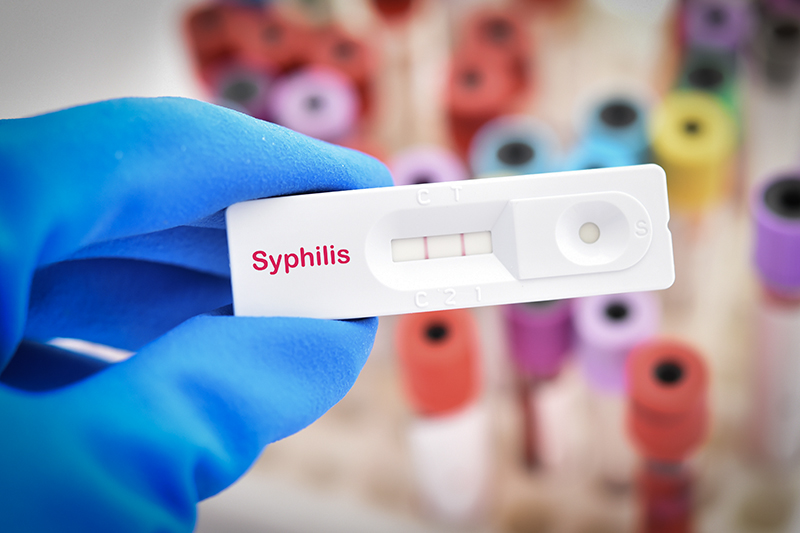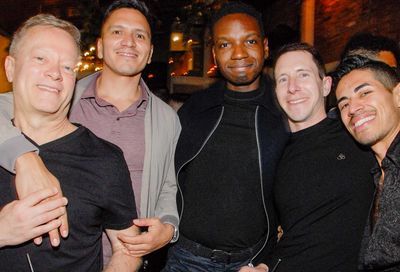Crystal and the Community
A grassroots alliance gains momentum in its fight against methamphetamines
The war room assembled June 28, a strategy session pulling together representatives from several corners of metro area’s community. The police were there, along with The Center, Youth Pride Alliance (YPA) and the Sexual Minority Youth Assistance League (SMYAL). So was Brother Help Thyself (BHT), the D.C. Department of Health, and others. The enemy in their sights: methamphetamine.
The drug is infamous within the gay male community. In the wake of other club drugs, methamphetamine — more commonly known as ”tina,” ”crystal,” ”meth,” among several other names — has taken center stage. Highly addictive, its claim to fame is a reputation for giving users a sense of ”hyper-sexualization.” Many health professionals fear that the drug’s effect on libido paired with its stimulant qualities is a formula perfect for increasing a user’s chances of becoming infected with HIV. Others are worried not by the threat of HIV, but by the calamitous damage the drug can do to an addict’s health all by itself. In a broader scope, a National Association of Counties survey of 500 sheriff’s departments in 45 states released Tuesday, July 5, shows that law enforcement agencies finger methamphetamine as the nation’s leading drug problem.
This Thursday night meeting in the 14th and K conference room shared by BHT, The Center and Metro D.C. PFLAG, was not the first time these generals and majors have met to discuss their common enemy. Still, it was among the first steps for this particular loose alliance, and it did bring them closer to officially forming a unified front against the recreational drug.

”Is there anything else going on? Are we entering new territory here?” asked Michael Sessa, president of The Center, the area’s LGBT community center. Sessa’s questions got little in the way of answers, making it seem that indeed, Sessa and his confederates are on their own. ”I’m shocked by how much information is not out there…. [Methamphetamine use] seems to be all around me.”
”It’s around all of us,” replied Bruce Weiss, executive director of SMYAL. ”I think nobody in the D.C. community recognized this problem till you did the forum.”
The forum to which Weiss referred took place May 23 at Titan Bar. Under the title ”The Leather Community Wants You to Know: The Truth About Crystal Meth,” it drew about 50 people and ran about 45 minutes longer than its scheduled hour and a half as community members sought answers and shared their stories.
Sessa, a prominent member of the local leather community along with helming The Center, was central in organizing the event.
During last week’s discussion, two other panelists from the May 23 forum returned to continue the examination on how to deal with methamphetamine abuse within the local community: David Schwartz, a clinical psychologist in private practice, who has volunteered with Whitman-Walker Clinic for the past 10 years as an addiction consultant, and Yasir Shah, a program assistant at the D.C. Department of Health’s HIV/AIDS Administration.
While not a panelist at the May 23 forum, Weiss was a vocal member of the audience. So was Larry Stansbury, executive director of BHT. Both attended the June 28 meeting. Officer Zunnobia Hakir of the Washington, D.C., Metropolitan Police Department’s Gay and Lesbian Liaison Unit; Tyrone Hanley of YPA, Robert Baldre, of The Center’s board of directors; Bill Briggs of the Northern Virginia AIDS Ministry (NOVAM); and Robert Rigby of the Gay, Lesbian and Straight Education Network (GLSEN) completed the roster.
This second gathering was called specifically to address tailoring an anti-methamphetamine campaign toward LGBT youth. Sessa added that several youths and Metro Teen AIDS had been invited, but weren’t able to attend. Despite the intended focus on youth, there was apparently still too much groundwork to be laid to maintain that focus.
While issues specific to youth occupied possibly a quarter of the evening’s discussion, equal time was given to participants’ raw feelings about methamphetamine use in the community.
Sessa has been very frank about a former partner’s addiction to the drug. In this intimate setting, others shared their own experiences, from dealing with partners still working through addiction, to abandoning entire circles of friends who seem lost in addiction. These anecdotes have their place, considering hard data on methamphetamine addiction, particularly within the MSM (men who have sex with men) community, is somewhat sparse.
”There are so many of us who have witnessed these things,” said Weiss of the stories of some meth addicts’ unhealthy, anti-social, sometimes desperate, often tragic downward spirals. ”These stories aren’t someone else’s stories. I want the purpose of everything we do to be toward bringing about a community without crystal meth.”
If participants could agree on Weiss’s definition of success, they didn’t necessarily agree on the best way of dealing that knockout blow. While most of the discussion was a steady flow of a participants offering what possibly useful information they’d learned from their respective roles in the community, some contention simmered to the surface when the talk turned to ”harm reduction” versus ”zero tolerance.”
The debate is actually three-pronged. A harm-reduction campaign grants that people will use methamphetamines regardless of what steps the community takes to prevent such use. Accordingly, such a campaign incorporates information that may minimize health risks for people using the drug.
From a zero-tolerance perspective, including such information is regarded as an unacceptable, veiled endorsement of drug use. Telling people how to lessen the drug’s dangers may coax more into trying it, the theory holds.
The third prong is concerned with ”triggers,” or information that may push a recovering addict to relapse into drug use. Harm-reduction information may easily include language that may be a trigger. The fear is that for some recovering addicts, a description of harm-reducing techniques when using methamphetamines may read like a vacation brochure of their favorite destination.
Around the conference table June 28, the group’s collective wisdom included this trio of considerations, but they could not build a consensus on the media-campaign component of an anti-crystal strategy.
”If you don’t allow room for harm reduction, you’re going to lose a lot of people,” warned Hanley, pointing out that people are already embarrassed or afraid to discuss their drug usage. Adding more stigma will simply push users further into the closet, he reckoned.
”We’re losing a lot of people already,” Stansbury countered. ”The community needs to stop enabling. That’s probably the hardest thing for people to learn.”
What the group did seem to agree on was that whatever information is offered to the public, it should be accurate. Repeating the Reagan-era ”just say ‘no”’ approach was roundly scorned.
As Hakir shared her impression that anti-drug campaigns like D.A.R.E. (Drug Abuse Resistance Education), a police-led campaign aimed at children, are not very effective, Schwartz added that there is a culture of disingenuous anti-drug propaganda.
”Of past social campaigns, like marijuana, they’ve largely been more dishonest than honest,” he said. ”Most of what you see out there is a description of the end of the disease.”
While most participants at this meeting seemed to favor ways of stigmatizing methamphetamine use, no one was in favor muddying the truth with scare tactics. Sessa shared another role a media campaign can play, indirectly aimed not at meth users, but at those trying to keep the drug out of the community.
”These social campaigns can be seen as fluff…[but] they work for me. They make me feel good,” said Sessa, explaining that the warnings about the drug help him maintain his own zero-tolerance stance toward methamphetamines. ”I want to see that [anti-crystal] message…. I’m pretty dominant — alpha, leather — and I feel the peer pressure.”
Aside from supporting those in the community that are trying to avoid methamphetamines, Hanley added that educating people about the potential negative effects of methamphetamines would give people the best chance of not trying the drug. ”It’s a lot easier to say yes to a drug when you don’t know that much about it, and it’s coming from your best friend,” he said.
As in Hanley’s best-friend scenario, methamphetamines often surface in social settings. Accordingly, nightspots that cater to gays popped up on the group’s radar — both as sites for anti-crystal campaigns, and as sites where people have access to the drug. Many pointed out that methamphetamine use seems to occur at some venues unimpeded. Accordingly, such businesses have been added to the group’s agenda. Though what relationship the group will attempt to forge with these businesses has yet to be decided.
”A major factor in our community is business establishments,” said Stansbury. ”You’ve got to get the drugs out of the clubs.”
He cautioned, however, that any sort of strong-arm approach with proprietors of gay nightspots would be futile. ”We’d come off smelling like vigilantes.”
Weiss echoed that opinion, while the rest seemingly agreed. ”I think it’s important to get these businesses on board,” Weiss said. ”I think we need to change the culture.”
Several people offered examples of places in both the real and virtual worlds where the anti-crystal message has been delivered to those most likely in need of hearing it. Attendees pointed to Boston, Fort Lauderdale, Los Angeles, New York, Provincetown and Seattle as cities with anti-crystal campaigns worth studying. On the Internet, the same was said for Seattle-based GayCity.org and tweaker.org.
”From my perspective, D.C. is one of the worst cities for addiction,” said Sessa, saying that he perceives a high amount of drug use going largely unchallenged.
”It hasn’t reached the critical mass of everyone knowing too damn many addicts,” added Weiss.
Sessa guessed that as methamphetamine moved east from the West Coast roots of this current manifestation of the drug’s popularity, once it arrived in D.C. it was dumped at Whitman-Walker Clinic’s doorstep and then forgotten by the rest of the community. And while WWC offers a range of addiction-treatment services, the group expressed reservations about the clinic’s ability to offer such services in the future due to the clinic’s current financial crisis. Of particular concern is the clinic’s Scott Harper House, a live-in addiction treatment facility. And if any anti-crystal campaign is to work, readily available treatment is key, says Schwartz.
Offering his own ballpark estimate that a quarter of those who try methamphetamines will become addicts, Schwartz explained the delicate balance between the window of opportunity when an addict will genuinely seek help, and having that treatment available when that opportunity presents itself.
”I’ll say it over and over again — you wait until the window is open,” said Schwartz. ”If you try to ram it when the window is closed, all you get is broken glass.” Schwartz asked that the group’s agenda include seeking funding sources for addiction treatment. The issue of funding, however, raised a new set of concerns.
”We need the D.C. government to come in and take ownership of this crisis,” argued Weiss, guessing that a significantly large portion of district citizens are affected by methamphetamine addiction to warrant more government spending to combat meth use and increase treatment opportunities.
Stansbury warned, however, that before the group approaches the City Council or any other government body, the group should have very specific aims in mind. Seeking funds for particular goals will increase the chances that funds will be used as the community, rather than the government, sees fit, he said. ”I’m leery about asking the government for money, because that’s when they start to dictate.”
By the end of the June 28 discussion, the group stopped just short of finding a name for itself, though that step seems not far off. They did, however, hammer out six short-term goals:
They will move forward with a social campaign.
They will pursue creation of a drop-in center for meth addicts.
Efforts will be made to locate funds for addiction treatment.
They will continue to hold community forums in the pattern of the May 23 event, targeting youth, businesses, health professionals, and other concerned community members.
They will try to create temporary, emergency housing as a component of meth-addiction treatment.
And they will work to involve the D.C. government in this fight.
Of those six goals, the first to be met will likely be a second forum. When the group meets again on July 26, at the top of the agenda is organizing a methamphetamine forum for youth in the very near future. From there, how this fledgling, grassroots alliance finds its way in its fight against methamphetamine is somewhat in the air. In a follow-up note to the group, Sessa stressed, however, that dedication is one element that they all brought to the table.
”We agreed to commit to this group,” Sessa wrote. ”[We agreed] that we are here for the long haul…[to] do what we can to help.”
Support Metro Weekly’s Journalism
These are challenging times for news organizations. And yet it’s crucial we stay active and provide vital resources and information to both our local readers and the world. So won’t you please take a moment and consider supporting Metro Weekly with a membership? For as little as $5 a month, you can help ensure Metro Weekly magazine and MetroWeekly.com remain free, viable resources as we provide the best, most diverse, culturally-resonant LGBTQ coverage in both the D.C. region and around the world. Memberships come with exclusive perks and discounts, your own personal digital delivery of each week’s magazine (and an archive), access to our Member's Lounge when it launches this fall, and exclusive members-only items like Metro Weekly Membership Mugs and Tote Bags! Check out all our membership levels here and please join us today!























